During the past few decades, dramatic changes have occurred across Missouri's agricultural landscape. Those changes include generally larger farms, increased field sizes, promotion of monocultures and improvements in farm equipment. Although many of these changes have provided economic benefits, there have been trade-offs. For instance, traditional edge and fence row habitats and other types of early-successional vegetation (such as shrubs, grasses, annual weeds and forbs) that were once a common sight around many fields (Figure 1) have been eliminated or the quality significantly reduced on many farms (Figure 2).
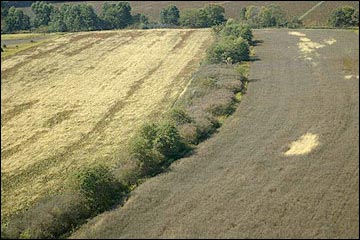 Figure 1. Field borders and fence row habitats were once a common sight around many crop fields.
Figure 1. Field borders and fence row habitats were once a common sight around many crop fields. 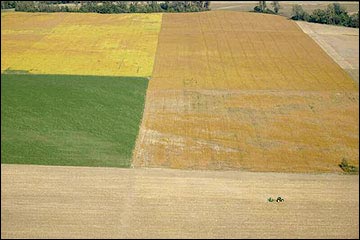 Figure 2. Many farms have eliminated field borders and fence rows.
Figure 2. Many farms have eliminated field borders and fence rows.
This type of vegetation provides food and cover for many species of wildlife and is an important habitat component for the survival of bird species such as bobwhite quail. Many species of wildlife have adapted to "edge" habitats, which are created at the interface of two or more plant communities, such as the transitional zone between a woodland and crop field or pasture.
Field borders within the agriculture landscape
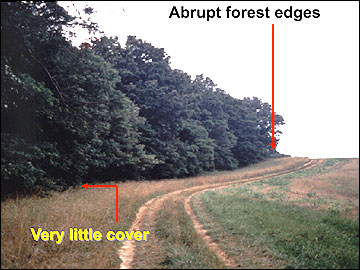 Figure 3. Narrow, abrupt edges provide little plant diversity and poor-quality habitat for wildlife.
Figure 3. Narrow, abrupt edges provide little plant diversity and poor-quality habitat for wildlife.
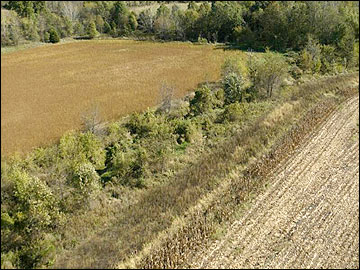 Figure 4. This wide vegetative zone between the crop field and shrubs provides higher quality habitat for wildlife.
Figure 4. This wide vegetative zone between the crop field and shrubs provides higher quality habitat for wildlife.
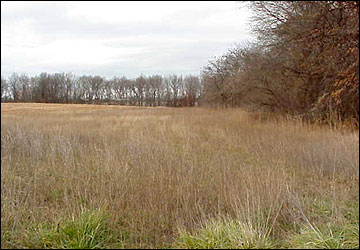 Figure 5. A field border established next to a crop field provides one type of edge habitat beneficial to wildlife.
Figure 5. A field border established next to a crop field provides one type of edge habitat beneficial to wildlife.
On many farms, field borders, grass waterways and idle areas may be the only permanent type of vegetation that provides important food and cover plants that wildlife need to survive. Establishing a field border or maintaining a fence row around a crop field or pasture is one way to improve habitats for wildlife in the agricultural landscape. Practices such as disking, burning, mowing, planting food strips and harvesting timber also create opportunities to enhance areas for wildlife. Field borders can provide increased plant diversity and transitional zones of habitat around crop fields. Studies in Illinois suggest that bobwhites tend to increase in areas that have a greater quantity of edge between woody and herbaceous cover (grasses, forbs and legumes). There is ample evidence that the abundance of bobwhites in an area increases with the quantity of suitable permanent cover, which can be increased on a farm through the establishment and management of edge habitats, such as field borders.
However, in many instances the habitat created is poor quality and lacks essential food and cover plants (such as shrubs, grass and forbs) that are important for a variety of wildlife. Figure 3 provides an example of an edge habitat of poor quality. Note the narrow edge between the woodland and crop field. In many cases, mature woodlands lack herbaceous and shrubby cover and are located next to a field that offers unsuitable habitat for wildlife for much of the year. These narrow edges often provide poor habitat and thus can be ecological traps for wildlife. In other words, wildlife may be attracted to these areas where productivity is too low to replace the level of mortality. Often, predators like raccoons and coyotes will concentrate hunting activities near edges because of the abundance and variety of prey animals that are attracted to this special habitat.
Figures 4 and 5 provide examples of edge habitats improved for wildlife. A transition zone composed of a variety of plants including grasses, forbs and shrubs provides important habitat components for wildlife. Note the wider boundary that gradually combines the characteristics of several plant communities. The habitat provided in wider areas provides a better chance for wildlife to reproduce and survive.
Cropland field borders
Typically, a field border consists of a strip of non-crop herbaceous or shrubby vegetation that runs adjacent to the field margin. These areas can be intentionally managed around crop fields to create edge and increase plant diversity and interspersion within the landscape. Figure 6 depicts an aerial view of a field border established adjacent to a mature woody vegetation.
Field borders composed of grasses, forbs, legumes and shrubs can provide valuable food and cover resources for wildlife such as bobwhite quail, cottontail rabbits, gray fox, indigo buntings and box turtles. Field borders located next to shrubby and woodland habitats can provide food and cover for wildlife associated with forested areas, such as white-tailed deer, wild turkey and brown thrashers (Figure 7).
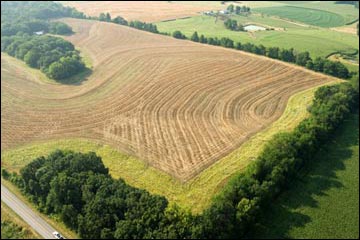 Figure 6. An aerial view of a field border established adjacent to mature woody vegetation.
Figure 6. An aerial view of a field border established adjacent to mature woody vegetation. 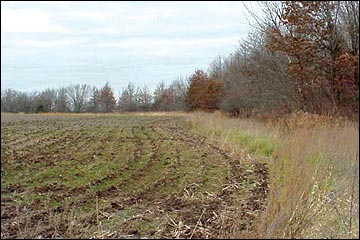 Figure 7. A herbaceous field border next to a woodland. Narrow borders can benefit wildlife, but wider is better.
Figure 7. A herbaceous field border next to a woodland. Narrow borders can benefit wildlife, but wider is better.
Agronomic and economic benefits
A key question for landowners interested in establishing and managing field borders is to determine whether net income will be greater than if the border areas were planted with crops. Another concern for crop producers is whether the potential increase of insects and weeds will result in decreased yields to the surrounding crop. Recent studies examined how herbaceous field borders around agricultural fields influence crop yields, insect abundance, farm-level economics and potential wildlife habitat.
Agronomic impacts
Crop yield
Information from precision-farming technology indicates that field edges located next to a mature woodland may suffer at least a 30 percent reduction in yield, making these areas unprofitable to plant, fertilize, treat with pesticides and harvest. This yield loss may be greater during drought years. Crop yield losses are greatest along the edges of fields that are surrounded by woody vegetation because of competition for nutrients and sunlight (Figures 8 and 9). Figure 10 shows an ear of corn grown along a Conservation Reserve Program CP-33 buffer that was 30 feet wide (on the top) compared to an ear of corn grown on the opposite side of the field that had a fence line composed of mature trees. Converting these field edges to a border of early-successional vegetation is an alternative to consider for agronomic, economic and wildlife benefits.
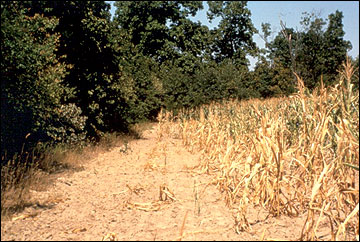 Figure 8. Farmers may experience crop losses in fields planted adjacent to mature trees.
Figure 8. Farmers may experience crop losses in fields planted adjacent to mature trees.
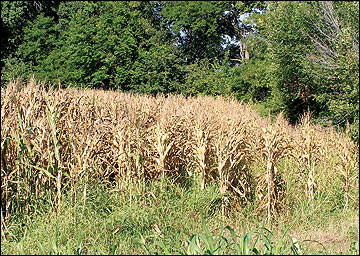 Figure 9. Shorter corn rows next to the tree line display effects of crop yield losses in a field planted next to mature trees.
Figure 9. Shorter corn rows next to the tree line display effects of crop yield losses in a field planted next to mature trees.
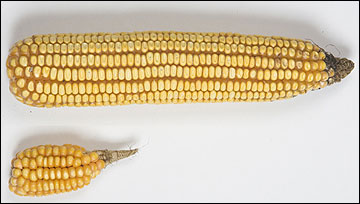 Figure 10. A comparison of corn grown adjacent to a 30-foot-wide field border (top) and corn grown next to a tree line (bottom).
Figure 10. A comparison of corn grown adjacent to a 30-foot-wide field border (top) and corn grown next to a tree line (bottom).
Several studies conducted at MU have investigated the influence of herbaceous field borders on corn and soybean yields and on insect abundance. One study evaluated three different plant mixtures in 30-foot-wide field borders, including:
- Tall fescue
- A cool-season mixture of orchardgrass timothy and red clover
- A warm-season mixture of little bluestem, sideoats grama and Korean lespedeza.
In control fields, the crop was planted in place of the experimental plant-mixture border.
The study then compared the crop yields of fields with and without experimental borders. There were no significant differences in either the soybean or corn yields among the various field border treatments. Producers are concerned that nearby weeds will reduce crop yields, and in this study, the experimental borders were very weedy. Despite the abundance of weeds in experimental borders, adjacent crop yield was not significantly reduced. And, as expected, crops in the control border sections were stunted and had lower yields, particularly when there was a hedgerow nearby. These findings suggest that it may be more economical for farmers to develop herbaceous field borders around crop fields (by enrolling in conservation programs designed to promote field borders) than to plant crops on the edges of fields.
Insect pests
Managing insect pests is a very important consideration for corn and soybean producers. Crop production and protection programs rely on integrated pest management (IPM) approaches to prevent and solve problems. Concerns exist about the potential for pest insects to move into adjacent crops from field borders. However, studies have shown that grass and forb mixtures recommended for use in field borders do not negatively affect corn or soybean yields, which suggests that the potential for increased insect pests is not a concern. These borders had no affect on the abundance of bean leaf beetles (an important soybean insect pest), which helps alleviate farmers' concerns.
In fact, field borders planted to warm-season grass mixtures were found to potentially enhance the management of European corn borer (ECB) by reducing infestation of the corn stalks in the field by up to two to three times less when compared to field borders composed of cool-season grasses such as tall fescue. Warm-season grasses harbor large populations of predators and parasites of ECB, which may subsequently reduce the abundance of ECB in corn fields. Because these findings are contrary to previous work that suggested warm-season grass actually increases abundance of ECB, additional research is needed to study the relationship between warm-season grass and ECB.
Economic incentives
Federal policy provides financial incentives for landowners to manage some cropland field borders for wildlife habitat. Landowners may be eligible for payments, cost-share or other incentives in exchange for removing field borders from crop production. The economic question for landowners is: How much will conservation program payments offset the loss of future net revenue on the enrolled acres for the life of contract?
The Food and Agricultural Policy Research Institute (FAPRI) at MU conducted studies that estimated the net economic benefits of enrolling crop acres into conservation practices. Information was obtained from groups of Missouri producers for real-world estimates of key variables such as enrolled field border configurations, yields with and without field borders, program payments and production costs. Specific types of farm businesses were then simulated for 10 years into the future under outlook scenarios. The FAPRI study did not attempt to estimate any economic benefit resulting from improved wildlife habitat, such as recreational value.
While the net benefits were not positive for all scenarios, the simulations generally showed that, of the farm types studied (corn-soybean-wheat rotations), program payments would likely offset all of the foregone returns from crops, even with projections of historically high crop prices.
For example, a 500-acre farm with 10 acres of field border increased net cash income, on average, by $250 per year ($25 per enrolled acre). This farm gave up gross market revenue of $266 per year per enrolled acre. By not cropping it also avoided $164 per enrolled acre in operating costs (seed, fertilizer, chemical, fuel, repairs, etc.). The program payment more than made up the deficit in net crop returns foregone.
Net benefits, either positive or negative, were relatively small. For example, the worst-case scenario tested a 1,400-acre farm with 20 acres of field border, which decreased net cash income by an average of $39 per year per enrolled acre, or $780 per year for the farm.
Enrolling acres is more likely to pay where inefficient crop production exists due to any combination of low yields or high costs relative to prices. Farms with high valued output relative to costs on field edges are less likely to benefit. Farmers indicate that corn and soybean yields suffer more than wheat yields, perhaps due to the dates of maturity. Thus, there is less financial incentive to place borders on the edges of wheat fields.
You can obtain information on conservation programs by contacting your local USDA Farm Services Agency or USDA Natural Resources Conservation Service (NRCS) office. For information on state conservation programs and resources, you can visit Missouri Department of Conservation or Missouri Department of Natural Resources.
Wildlife and conservation impacts
Numerous studies conducted in Missouri as well as in other states have documented the wildlife and conservation benefits that result from establishing and managing field borders around crop fields in areas of intensive agricultural production (Figures 11 and 12).
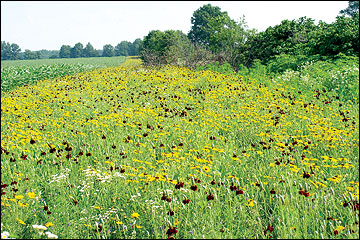 Figure 11. A field border composed of native forbs and warm-season grasses established next to a corn field.
Figure 11. A field border composed of native forbs and warm-season grasses established next to a corn field.
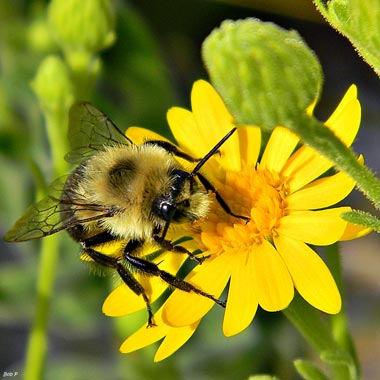 Figure 12. Field border plantings that include native forbs provide beneficial habitats for pollinators such as native bees and other beneficial insects.
Figure 12. Field border plantings that include native forbs provide beneficial habitats for pollinators such as native bees and other beneficial insects.
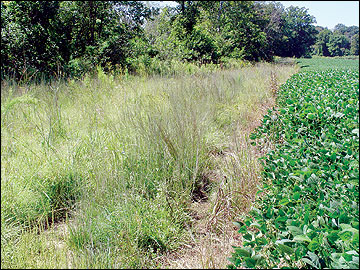 Figure 13. A 30-foot-wide field border composed of native forbs and warm-season grasses next to a soybean field.
Figure 13. A 30-foot-wide field border composed of native forbs and warm-season grasses next to a soybean field.
Studies in North Carolina and Mississippi demonstrated that field borders provide important winter habitat for migratory grassland sparrows and breeding habitat for numerous grassland and early-successional bird species. This research indicates that wider field borders support a greater density of birds, more species and higher nesting density than narrower field borders. However, even narrow borders provide greater habitat benefits than fields without any border.
A national monitoring effort (with sites located in Missouri) was established to track bird use on approximately 1,160 fields enrolled in the Conservation Reserve Program (CRP) CP-33 Habitat Buffers for Upland Birds practice. This study demonstrated that field borders planted with recommended grass/forb mixtures can increase the local abundance of bird species such as northern bobwhite, dickcissel, field sparrow and painted bunting by 50 to 100 percent, when compared to conventionally farmed fields. Collectively, these studies demonstrate that agricultural landscapes can support key species of regional conservation concern when select conservation practices are strategically used to create native plant communities on farmlands.
Results from these studies clearly demonstrate the value of field borders for many bird species that inhabit agricultural areas. Narrow (less than 15 feet) field borders can provide some benefits, although results from these studies suggest that field borders intended to provide nesting habitats should be greater than 30 feet in width. Wider field borders, such as those shown in Figures 11 and 13, provide more available and diverse sites for nesting and foraging, thus reducing the chance that predators will cause negative impacts.
Research has also shown that:
- A greater diversity of songbirds use field border habitats for cover, nesting and foraging activity during the spring and summer months.
- Farms with field borders harbor greater populations of grassland-dependent sparrows during the winter months compared with farms that have tilled field edges.
- An evaluation of field borders established as a CRP CP-33 practice shows that the numbers of bobwhite quail and selected species of songbirds (such as indigo buntings) increased on farms enrolled in this program.
- The abundance of a wide variety of wildlife species (birds, mammals, reptiles, amphibians and insects) is higher in fields enrolled in the CRP CP-21 (filter strip) practice than in fields that are cropped to the edge.
- Bobwhite quail populations are greater on farms with field borders composed of grasses, forbs and shrubs when compared to farms that are tilled to the field edge.
- Properly managed herbaceous field borders provide vegetative structure necessary for quality bobwhite quail brood habitat (i.e., open, bare ground conditions with appropriate overhead cover) as well as for pollinators.
- Field border systems create habitat that promotes increased insect diversity, which provides a food base for many species of birds, including bobwhite quail.
- Soybean and corn fields with surrounding field borders have more beneficial insects and fewer corn earworm caterpillars.
- There is evidence of soybean yield increases of 10 percent to 30 percent in fields that are adjacent to field borders established with pollinator plantings.
Establishment techniques
Precision agriculture technology and other techniques to identify location and width
Common questions often asked are, "Where should I establish a field border?" and "How wide should it be to provide wildlife habitat?" The answer is the wider the better. Leaving as little as 15 feet can provide some benefits. However, field borders that are 30 feet wide or more provide much better habitat for nesting and brood rearing. One approach is to use the width of a disk harrow, or multiples of the width, to facilitate the management of the border strip. If possible, maintain field borders around the entire crop field to connect fallow corners and other adjacent habitats that might be present. Even a border established along one side of a field can provide significant benefits if there are adjacent habitats nearby. Precision agriculture techniques can be used to accurately identify locations for establishing field border habitat around the crop field.
Other areas may also be unprofitable to farm as well. Information from precision-farming technology can be used to identify these locations. Through the use of yield maps, producers have access to information that can be used to identify these areas that can be potentially transitioned to a field border or other conservation practice that benefits wildlife and pollinators. Many of these practices can be established with cost-share dollars and offer an annual payment from federal or state agencies.
Planting
Field borders can be planted either with a no-till drill or with conventional equipment. It is best to use the proper combinations of grasses, forbs (annual weeds and legumes) or mixtures of the two. The selection of what to plant should be based on the overall cover type needed — whether to supply supplemental foods or to provide nesting, brood rearing or escape cover. Reseeding annuals and forbs (such as annual lespedezas or partridge peas) mixed with perennial species of grasses (e.g., little bluestem, big bluestem, sideoats grama) are excellent selections. Cool-season grasses, such as tall fescue and smooth brome, are not recommended for use in a field border because of the potential invasive nature of the plant into adjacent habitats.
Two field border plants mixtures beneficial to wildlife are as follows:
- In areas where concentrated flow erosion is not a concern
- Little bluestem — 2.7 lb. pure live seed per acre (PLS/acre)
- Sideoats grama — 1.4 lb. PLS/acre
- Approved native forbs — 3.0 lb PLS/acre
- In areas where concentrated flow is a concern
- Little bluestem — 2.7 lb. PLS/acre
- Sideoats grama — 1.4 lb. PLS/acre
- Alfalfa — 2.0 lb. PLS/acre
- Approved native forbs — 3.0 lb. PLS/acre
Natural field border
Field borders do not have to be planted with vegetation to provide benefits for wildlife. In fact, simply allowing native vegetation to grow along the border of a cultivated field (as in a fallow field) can create valuable habitats. It will be necessary to disk or apply a herbicide to establish native vegetation if the existing field border is in a dense sod, such as tall fescue. These natural borders can be allowed to grow to shrubby cover or can be maintained by disking or prescribed fire.
Management practices
Proper management of herbaceous field borders includes conducting some type of disturbance regime approximately every three years. See Figure 14 for a calendar of management practices. Recommended management practices include:
Disking
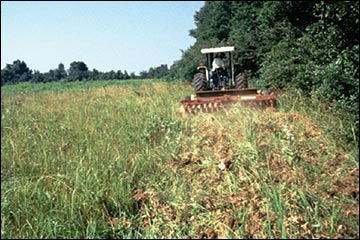 Figure 15. Strip disking can create and manage field borders.
Figure 15. Strip disking can create and manage field borders.
Field borders can be managed as a long, narrow fallow field using combinations that involve strip disking and planting (Figure 15). One option is to disk one-third to one-half of the border each year in the fall and allow it to remain fallow through the following summer. Fall and winter disking encourages the establishment of the "good weeds" (e.g., ragweeds, partridge pea, beggarweeds) that provide plenty of insects, seeds and the right type of overhead cover and bare-ground conditions that bobwhite quail will use the next year. As a general rule, field borders should not be disked during the spring or summer months for this will potentially destroy nests, eliminate critical brood-rearing cover and often promote the germination of a different weed complex that do not provide fall or winter foods.
Prescribed burning
Burning removes heavy thatch, sets back grasses and encourages wildflowers, legumes and annual seed-producing plants. For best results, burn one-third to one-half of the field border in any given year to maintain some nesting cover. A late spring burn is best for setting back cool-season grasses. Late summer through early fall is the best time to burn thick stands of warm-season grass field borders to setback the dominant grass and encourage more wildflowers and legumes.
Mowing
Mowing is not a recommended practice for managing field borders as it tends to decrease plant diversity and food availability while increasing the predominance of grasses in the stand. Mowing can be used during establishment of the grass planting to reduce competition from weeds or in conjunction with another management practice to enhance the effects of practices such as disking or spraying. It may also be used to help control noxious weeds or invasive tree sprouts.
Herbicides
Selective herbicide applications can be used to retard the growth of grasses to allow other species to diversify the stand. Herbicides can be applied in strips or portions of fields. Apply herbicides to no more than one-third of each field. Herbicide applications should be made when grasses are actively growing. For the best results, spray cool-season grasses in spring or early fall and warm-season grasses in late July and August. Always read and follow herbicide label directions. Do not use a non-selective herbicide, such as glyphosate, if legumes or native wildflowers are part of the planting.
Edge feathering
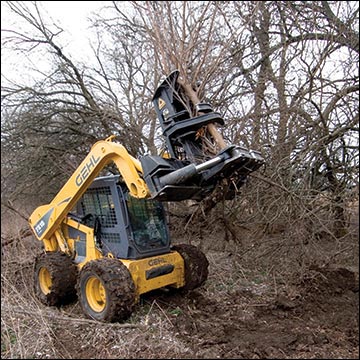 Figure 16. Field borders can be created and widened by harvesting or cutting mature trees next to a crop field (known as edge feathering).
Figure 16. Field borders can be created and widened by harvesting or cutting mature trees next to a crop field (known as edge feathering).
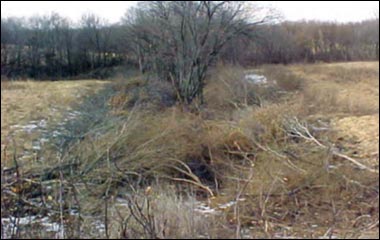 Figure 17. Visual of edge feathering next to a field.
Figure 17. Visual of edge feathering next to a field.
Field borders can be widened and enhanced for wildlife by cutting woodland edges back to encourage low growing food and cover plant species. This technique is often referred to as "edge feathering." Larger, mature trees can be harvested or cut to allow annual plants and shrubs to grow (Figures 16 and 17). It is recommended to treat stumps of downed trees with approved herbicides to prevent resprout and to consider eliminating competing grass competition with a non-selective herbicide prior to felling trees.
Summary
Field borders can provide a number of conservation benefits, such as reducing soil erosion from wind and water, protecting soil and water quality and providing wildlife habitat. These habitats, located at the edges of crop fields, can also serve to connect other buffer practices and habitats within the agricultural landscape that can be established for improved wildlife and pollinator habitat.
These areas can be developed and managed to create valuable cover and food resources for wildlife that inhabit grassy and brushy habitats such as bobwhite quail, cottontail rabbits, indigo buntings, brown thrashers and other songbirds. Properly managing the border can provide important wildlife habitat by:
- Increasing plant diversity and the availability of food resources such as seeds and insect prey (important in the diet for many wildlife species such as quail and turkey chicks);
- Providing links between woodlands and fields around the farm and expanding the amount of permanent cover and usable wildlife habitat on the property; and
- Providing critical winter and nesting cover for a variety of wildlife.
In addition, field borders have the potential to provide agronomic, economic and wildlife benefits. However, as research suggests, field borders are only one part of wildlife-friendly farm management. They are not a one-size-fits-all solution and should not be viewed as a "silver bullet" to increase breeding populations of most farmland songbirds.
The benefits of field borders vary from farm to farm and region to region, depending on the vegetative composition, the width of the borders and the characteristics of the surrounding landscape. Field borders that are part of a network of habitats that include woodlots, grasslands and a variety of crops are likely to be more attractive to birds and other wildlife. Research indicates that approximately 10 percent of the agricultural landscape should provide this plant diversity in the form of herbaceous field borders or other buffer types to have a positive impact on populations of bobwhite quail.
For more information
- Conservation buffers: wildlife benefits in southeastern agricultural system. Mississippi State University Forest and Wildlife Research Center: Research Advances Vol. 9, No. 2; WF220. January 2006.
- CP33 Pays. White, B. Missouri Conservationist Magazine. Revised November 2010.
- Herbaceous Field Borders Have Minor Impact on Corn Yield. Stamps, W. T., Dailey, T. V., Gruenhagen, N. M., and Linit, M. J. 2008. Online (1 July 2008). Crop Management doi:10.1094/CM-2008-0701-01-RS.
- Infestation of European corn borer, Ostrinia nubilalis, in Midwestern USA fields with herbaceous borders. Stamps, W.T., Dailey, T.V., and Gruenhagen, N.M. 2007. Agriculture, Ecosystems and Environment 121: 430–434.
- Soybean Yield and Resource Conservation Field Borders. Stamps, W. T., Dailey, T. V., Gruenhagen, N. M., and Linit, M. J. 2008. Agriculture, Ecosystems and Environment 124:142–146.
- For additional information on conservation management practices, visit USDA Farm Service Agency or Natural Resources Conservation Service.
- Missouri Department of Conservation private lands conservationists and/or wildlife biologists and wildlife consultants can assist in providing technical assistance for CP-33 as well as for establishing field borders around crop fields on your farm.
- Missouri Pheasants and Quail Forever has Farm Bill and coordinating wildlife biologists located in Missouri that can provide technical assistance for implementing field borders and conservation practices that provide habitat for wildlife and pollinators.